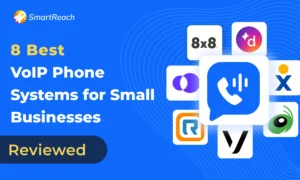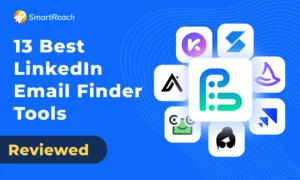How to Hire Remote Employees with Virtual Interviews?
The rise of remote work has fundamentally changed how companies build and manage teams. What started as a necessity during global disruptions has evolved into a long-term workforce strategy, with many organizations adopting distributed models to access talent globally, reduce costs, and improve flexibility.
However, recruiting for remote roles comes with unique challenges. From conducting effective virtual interviews to maintaining cultural alignment across borders, hiring managers must adapt their processes to succeed in this new landscape.
According to LinkedIn’s 2024 Global Talent Trends report, companies with mature remote hiring practices achieve 28% faster time-to-hire and report 32% higher quality-of-hire scores compared to those still adapting.
1. Virtual Interview Best Practices: Beyond Video Calls
Hiring remotely isn’t as simple as replacing in-person interviews with online calls. Recruiters need to create structured processes that allow for fair and accurate assessments of candidates. This includes developing interview questions that are consistent and designed to minimize bias, so every candidate is evaluated on the same criteria.
Research shows that structured interview processes improve hiring quality by 26% and reduce time-to-hire by an average of 12 days. For remote roles specifically, where you can’t rely on office presence to fill information gaps, this structure becomes even more critical.
Creating Structured Interview Frameworks
Scenario-based assessments are invaluable, as they give candidates an opportunity to demonstrate problem-solving and communication skills in real time. In addition, clearly communicating role expectations upfront helps candidates understand their responsibilities and the nature of distributed work, which ultimately improves mutual understanding and fit.
These adjustments make virtual interviews far more reliable and informative for both the hiring team and the candidate. Companies using standardized scorecards for virtual interviews report 34% better new-hire performance ratings at the 90-day mark compared to those using unstructured approaches.
Building Your Virtual Interview Scorecard
An effective remote interview scorecard should assess both role-specific competencies and distributed work capabilities. Include criteria such as:
Remote Work Competencies:
- Written communication clarity (test through take-home exercises)
- Autonomous problem-solving (scenario-based questions)
- Async collaboration style (references to past remote work patterns)
- Self-management indicators (questions about work structure preferences)
Role-Specific Skills:
- Technical capabilities (skill assessments, portfolio review)
- Domain expertise (case study discussions)
- Strategic thinking (situational judgment tests)
Weight each criterion based on role requirements, and have all interviewers score independently before discussing. This reduces bias and creates consistency across your hiring team. For a senior engineering role, you might weight technical skills at 40%, remote work competencies at 30%, and cultural factors at 30%. Adjust these ratios based on your specific needs.
Minimizing Bias in Virtual Assessments
To maintain fairness in virtual interviews:
- Use the same questions for all candidates in the same role
- Record interviews (with permission) for review by multiple stakeholders
- Implement “blind” resume reviews to reduce initial bias
- Set clear evaluation rubrics before beginning the interview process
2. How to Assess Cultural Fit When Hiring Remote Employees
One of the biggest concerns for remote hiring is cultural alignment. Without face-to-face contact, it can be difficult to evaluate how a candidate will fit into a company’s values and work style. Once you’ve established a structured virtual interview process, the next critical challenge emerges: determining whether candidates will thrive in your specific remote culture.
The Four-Quadrant Cultural Assessment Framework
Rather than relying on gut feel, structure your cultural assessment around four key dimensions:
1. Communication Style – Does the candidate prefer synchronous (calls, meetings) or asynchronous (email, documentation) communication? Neither is wrong, but misalignment with your team’s norms creates friction.
2. Autonomy vs. Guidance – Does the candidate thrive with minimal oversight or prefer regular check-ins? Map this against your management style and team structure.
3. Decision-Making Approach – Do they seek consensus or move quickly with available information? This matters enormously for remote collaboration dynamics.
4. Feedback Preferences – How do they want to receive performance input? Real-time messages? Weekly one-on-ones? Formal quarterly reviews?
Practical Strategies for Cultural Fit Assessment
To address cultural alignment effectively, companies can:
- Use behavioral interview questions that uncover communication style and collaboration habits. Ask candidates to describe specific situations where they collaborated remotely, made decisions with limited oversight, or handled communication challenges. For example: “Walk me through how you approached a recent project where you had limited manager availability. How did you make decisions? When did you seek input?”
- Include team-based interview panels so multiple stakeholders can assess fit. Cultural alignment is subjective and benefits from diverse perspectives across your hiring team. Having 3-4 team members interview the candidate from different angles provides a more complete picture.
- Use trial projects or short-term contracts as a way to evaluate real-world collaboration before committing to a full-time role. A two-week paid project often reveals more about someone’s remote work fit than ten hours of interviews. This approach lets both sides experience the working relationship authentically.
Case Study: Improving Remote Hire Retention
One B2B SaaS company with 450 distributed employees was experiencing 38% first-year turnover among remote hires, citing cultural misalignment and isolation. They implemented:
- Structured behavioral interview protocol focused on the four cultural dimensions
- “Team experience day”, a paid 4-hour collaboration session with potential teammates
- 30-60-90 day cultural check-ins with new remote hires
Results after 12 months:
- First-year turnover dropped from 38% to 14%
- Average time-to-productivity improved from 97 days to 68 days
- Employee engagement scores for remote workers increased 31 points
- Cost savings from reduced turnover: approximately $840,000 annually
3. Remote Hiring Challenges: Time Zones and Communication Solutions
Remote work often spans continents, creating friction when teams struggle with time differences. This makes synchronous collaboration and clear communication critical. Even candidates who align perfectly with your culture can struggle if communication logistics aren’t addressed proactively.
Time Zone Strategy Options
Strategies to address time zone challenges include:
Option 1: Geographic Limitation: Hiring from nearby regions to reduce time zone gaps. Some companies limit their geographic reach, hiring within a four-hour window of headquarters.
Option 2: Core Hours Establishment: Establishing core overlapping work hours for meetings and decision-making. For example, requiring all team members to be available from 10 AM – 2 PM in a central time zone.
Option 3: Asynchronous-First Approach: Relying on asynchronous tools like project management platforms, shared documentation, and clear workflows to keep projects moving smoothly. Teams go almost fully asynchronous, using detailed documentation, recorded video updates, and project management platforms.
This is where nearshore IT staff augmentation services become especially valuable. By sourcing talent from neighboring regions, companies get the benefits of remote work without the complexity of extreme time zone differences.
The Business Impact of Time Zone Management
Let’s quantify the time zone challenge. A recruiting team making 20 hires annually with candidates spread across 8+ hour time zones faces:
- Scheduling overhead: 4-6 hours per candidate for interview coordination = 80-120 hours annually
- Decision delays: Average 3-day lag between final interview and team debrief = 60 additional days of open requisitions
- Offer delays: Candidates waiting 24+ hours for responses due to time zones = 15-20% higher offer decline rates
Companies using the nearshore model (hiring within 3-4 hour time zones) or implementing strong asynchronous processes reduce these costs significantly:
- Scheduling time drops 60-70% with overlapping work hours
- Decision cycles compress to same-day or next-morning
- Offer response times improve by 50%+
Managing Communication at Scale
Once you’re coordinating outreach to multiple remote candidates across time zones—scheduling follow-ups, sending updates, coordinating with team members for interviews—the logistics can overwhelm recruiting teams. This coordination challenge is similar to what sales teams face when managing complex prospect outreach.
Sales engagement platforms like SmartReach.io help recruiting teams automate candidate follow-up, schedule interviews across time zones, and keep communication consistent without manual coordination overhead. The same technology that helps sales teams manage multi-touch campaigns can be applied to streamline how recruiting teams nurture candidate pipelines and coordinate distributed interview processes.
Tools for Asynchronous Collaboration
Beyond communication platforms, successful remote recruiting teams use:
- Project management systems (Asana, Monday.com) to track candidate progress through hiring stages
- Shared documentation (Notion, Confluence) for interview feedback and evaluation notes
- Video messaging (Loom, Vidyard) for asynchronous updates to hiring committees
- Scheduling automation to eliminate back-and-forth email coordination
4. How to Attract Top Remote Talent: Positioning Strategies
Despite the widespread adoption of remote work, some candidates remain hesitant due to concerns about career development, isolation, or lack of visibility. With strong interview processes and communication systems in place, your final hurdle is often the candidate’s own hesitation about remote roles.
Addressing Common Candidate Concerns
Employers can address these concerns by:
Emphasizing Flexibility and Work-Life Balance Remote roles offer flexibility that traditional office positions cannot match. Highlight specific policies like flexible hours, location independence, and family-friendly benefits.
Showcasing Remote Career Success Stories Highlighting success stories of remote employees who have advanced within the company provides reassurance about growth opportunities. Share specific examples in job descriptions and during interviews.
Providing Clear Growth Pathways Create transparent promotion criteria that eliminate “visibility bias” that often hurts remote workers in traditional organizations.
Building Career Development Infrastructure
One mid-sized SaaS company created a formal “Remote Career Track” program that included:
- Transparent promotion criteria: Published specific, measurable requirements for each level
- Virtual mentorship matching: Paired every remote hire with a senior employee within their first month
- Quarterly showcase sessions: Created forums where remote employees presented projects to leadership
- Remote leadership rotations: Gave high-performing remote employees temporary leadership roles on cross-functional initiatives
Results after 12 months:
- Remote employee retention improved from 76% to 89%
- Internal promotion rates for remote workers matched office-based employees (previously lagged by 40%)
- Candidate acceptance rates for remote roles increased 23%
The investment was primarily time, approximately 2 hours per employee monthly for mentorship and showcasing. The ROI in retention alone paid for the program within six months.
Communicating Your Remote Culture Effectively
Just as sales teams use engagement platforms to nurture prospects with multi-touch sequences, recruiting teams can apply similar approaches to candidate communication. After a candidate submits an application, an automated sequence could deliver:
- Day 1: Confirmation email with timeline expectations
- Day 3: Culture video showcasing remote team dynamics
- Day 7: Employee testimonial about career growth remotely
- Day 10: Update on application status
Tools like SmartReach.io enable recruiting teams to create these automated-yet-personalized communication flows, keeping candidates engaged throughout the hiring process.
You can even use an AI video creator to generate dynamic onboarding or culture videos that give remote candidates a feel for your team’s vibe and working style.
The platform’s analytics show which messages resonate most, helping recruiting teams refine their remote employer branding over time.
This systematic approach to candidate communication demonstrates the organizational capabilities that make successful remote work possible, candidates can see firsthand that your company has the systems and processes to support distributed employees effectively.
Creating Compelling Remote Job Descriptions
Your job posting is often the first impression candidates have of your remote culture. Include:
- Specific details about communication norms (sync vs. async balance)
- Time zone requirements or core hours expectations
- Technology stack and collaboration tools used
- Remote work benefits (home office stipend, co-working allowance)
- Career development opportunities specific to remote employees
Taking Action on Remote Recruiting
The shift to remote work has fundamentally changed how companies attract, evaluate, and retain talent.
Success in this environment requires more than simply moving existing processes online, it demands thoughtful adaptation, from conducting structured virtual interviews to maintaining cultural alignment and overcoming communication challenges.
Organizations that invest in clear expectations, strong collaboration practices, and systematic engagement for remote employees will not only hire better but also build teams that are resilient, productive, and connected across distances.
Frequently Asked Questions About Remote Work Recruiting
What is remote work recruiting?
Remote work recruiting is the process of sourcing, evaluating, and hiring candidates for positions that don’t require physical office presence. This includes conducting virtual interviews, assessing remote work capabilities, and building distributed teams across geographic locations.
How do you conduct effective virtual interviews?
Effective virtual interviews require structured assessment frameworks, consistent evaluation criteria, scenario-based questions that test remote work competencies, and clear communication of role expectations. Use standardized scorecards to reduce bias and maintain fair candidate comparison.
What are the biggest challenges in hiring remote employees?
The three biggest remote hiring challenges are: assessing cultural fit without in-person interaction, managing time zone differences for scheduling and communication, and convincing candidates that remote roles offer genuine career development opportunities.
How can companies assess cultural fit for remote roles?
Assess cultural fit through behavioral interview questions focused on communication style, autonomy preferences, and collaboration habits. Include multiple team members in the interview process and consider using paid trial projects to evaluate real-world working dynamics before extending full-time offers.
What time zone strategy works best for distributed teams?
The most effective time zone strategies are: hiring within 3-4 hours of company headquarters (nearshore approach), establishing core overlapping hours for synchronous work, or implementing strong asynchronous workflows using project management tools and documentation systems.
How long should a remote hiring process take?
The average remote hiring process takes 3-4 weeks from initial application to offer. However, companies with structured virtual interview processes and clear communication workflows can reduce this to 2-3 weeks while maintaining quality assessments.



